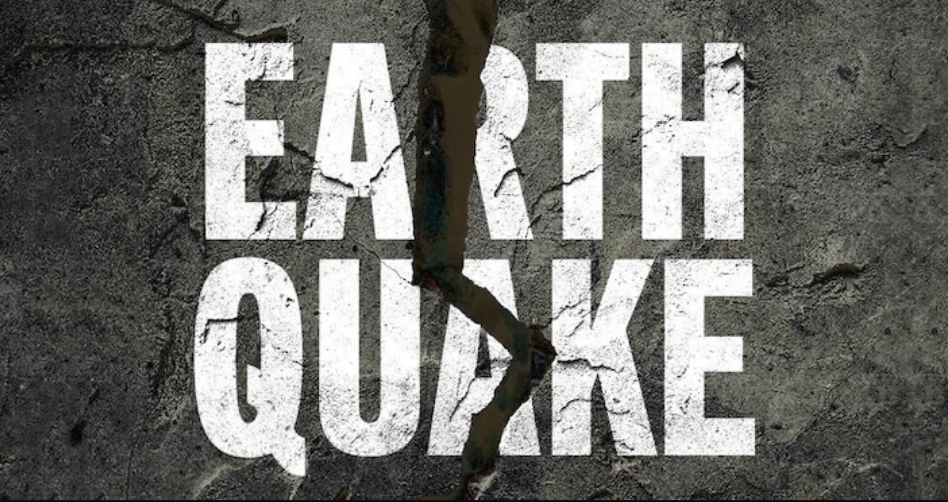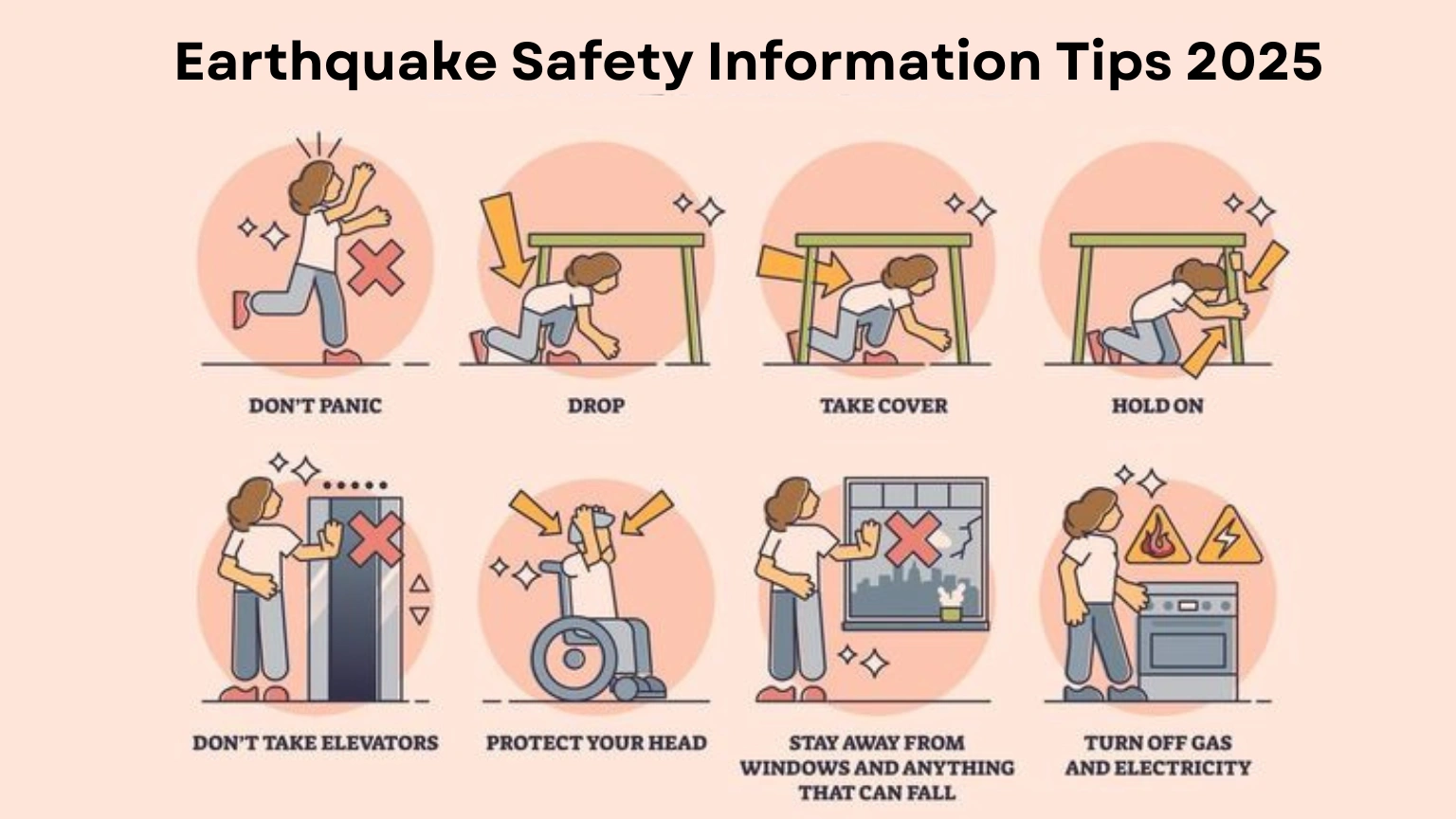Everyone is well aware of what is earthquake, as they might have heard the news or personally experienced it. Moreover, there is no doubt that earthquakes are quite dangerous and can be scary for anyone. It can cause massive damage to a country, especially when the magnitude is too high. However, you must be aware of certain earthquake safety information and tips in 2025 to protect your life and others. So, without further delay, let’s begin by describing earthquake safety measures so that they help you understand how to stay safe Before, during & after an earthquake.

Read More: Heatwave Safety Tips
Why Earthquake Preparedness Matters
Geological surveys confirm that Pakistan is situated on a major seismic zone, the boundary between the Indian and Eurasian tectonic plates. This makes the region highly susceptible to powerful earthquakes, as tragically demonstrated by the 2005 Kashmir earthquake.
With studies indicating that a significant portion of the building stock may be vulnerable, understanding proven safety procedures is not just advisable, it’s essential for survival. The following steps, endorsed by disaster management authorities, can protect you and your family.
Earthquake Safety Information Tips 2025

1. What to do Before an Earthquake | Preparedness is Key
Earthquakes strike without warning. Preparedness is not about fear, but about empowerment. Taking these expert-recommended steps now significantly increases your safety, minimizes damage, and ensures your family’s resilience.
1. The Four-Steps (Home Safety Check)
Most injuries in earthquakes are caused by falling objects and furniture. Conduct a thorough walkthrough of your home and secure these common hazards:
- Anchor Tall Furniture: Secure bookcases, cabinets, refrigerators, and water heaters to wall studs with flexible straps.
- Secure Overhead Items: Ensure heavy picture frames, mirrors, and light fixtures are well-fastened and not hanging over beds or couches.
- Fasten Shelving: Use museum putty or velcro to secure valuable and heavy items on shelves.
- Check Overhead Storage: Secure items stored in high cabinets or overhead storage areas so they cannot fly out.
- Know Your Utilities: Learn how to safely turn off your natural gas, water, and electricity. Keep the necessary tools (like a gas shut-off wrench) nearby.
- Evaluate Structural Integrity: If you live in an older building, consult a structural engineer to assess its vulnerability and recommend retrofitting options.
- Consider Your Ceiling: If you have a heavy, suspended ceiling, ensure it is properly braced.
2. Create a Family Emergency Plan
- Designate a Meeting Spot: Choose a safe, open area near your home and another outside your neighborhood in case you cannot return home.
- Plan for Communication: Assume that phone lines will be down. Designate an out-of-town contact person whom all family members can call or text to check in. This person can relay information.
3. Build Emergency Kits
Assemble and maintain kits that will allow you to be self-sufficient for at least 72 hours (ideally two weeks).
- Home Kit: Store in an accessible location.
- Water: At least one gallon per person per day.
- Food: Non-perishable, easy-to-prepare items (canned goods, energy bars).
- First Aid Kit: Including essential medications.
- Tools: Flashlight (with extra batteries), multi-tool, whistle, wrench for turning off utilities.
- Other Essentials: Cash, copies of important documents (ID, insurance), portable phone charger, N95 masks.
- Grab-and-Go Bag: A smaller version of your home kit for each family member, kept in an easy-to-reach place in case you must evacuate quickly.
- Car Kit: Keep essentials like water, shoes, a flashlight, and a first-aid kit in your vehicle.
4. Protect Your Financial Health
- Review Insurance: Standard homeowner’s or renter’s insurance typically does not cover earthquake damage. Inquire about a separate earthquake insurance policy and understand its deductibles and coverage limits.
- Document Your Belongings: Take photos or videos of your home and valuables for insurance purposes. Store these digitally (e.g., in the cloud).
2. What to do During an Earthquake | Drop, Cover, and Hold On!
This is the single most important and universally recommended action to protect yourself during an earthquake. It is endorsed by seismologists and emergency response experts worldwide.
Why “Drop, Cover, and Hold On” Works:
This method provides a critical layer of protection against the most common earthquake hazards: falling objects (like ceiling plaster, light fixtures, and bookshelves) and collapsing walls. By getting under sturdy furniture, you create a “safety triangle” or a void space that can shield you from debris.
The Step-by-Step Guide:
- DROP onto your hands and knees immediately. This position prevents you from being knocked over by the shaking and allows you to crawl to shelter if needed. It also protects your vital organs.
- COVER your head and neck with one arm and hand.
Get under a sturdy table or desk. If there is no table nearby, crawl to an interior wall (away from windows) and crouch down, protecting your head and neck.
Stay on your knees; a taller piece of furniture may collapse if you are lying flat underneath it.3. HOLD ON to your shelter with one hand until the shaking stops.
- Be prepared to move with it. Furniture can “walk” across the floor during violent shaking.
- If you cannot hold on, remain in a crouched position with your arms protecting your head and neck.
- Get under a sturdy table or desk. If there is no table nearby, crawl to an interior wall (away from windows) and crouch down, protecting your head and neck.
Stay on your knees; a taller piece of furniture may collapse if you are lying flat underneath it.
Important Scenarios and Exceptions:
- In Bed: Stay there. Roll onto your side and hold on, pulling a pillow over your head for protection. Do not get up and risk walking over broken glass.
- In a Wheelchair: Lock your wheels. Bend over and cover your head and neck with your arms. Use a book, pillow, or anything available for protection.
- Nowhere to Hide: If you are in a room with no furniture, crouch in an inside corner of the building, away from windows and tall furniture. Protect your head and neck.
- Outdoors: Move to a clear, open area away from buildings, trees, streetlights, and utility wires. Then, Drop, Cover, and Hold On to protect yourself from falling debris.
What NOT to Do:
- Do not run outside. You are more likely to be injured by falling debris from the exterior of the building.
- Do not stand in a doorway. Modern doorways are no stronger than any other part of a house and do not protect you from flying or falling objects.
- Do not believe the “Triangle of Life” myth. This alternative theory is not supported by expert agencies and can be more dangerous. Staying under cover is the best strategy.
By memorizing and practicing Drop, Cover, and Hold On, you are equipping yourself with the most effective, expert-backed response to survive an earthquake.
3. What to do After an Earthquake | Safety Checks & Recovery
The moments and hours following an earthquake are critical. Your priorities shift from immediate protection to safety assessment, helping others, and preventing further danger. Follow these steps, endorsed by global disaster management agencies.
Immediate Actions: Once the Shaking Stops
- Check Yourself First: Before anything else, tend to your own injuries. You can’t help others if you are hurt.
- Remain Calm & Expect Aftershocks: Aftershocks are certain and can be powerful enough to cause further collapse. Be mentally prepared to Drop, Cover, and Hold On again at any moment.
- Protect Yourself from Debris: Put on sturdy shoes, long pants, and work gloves to protect yourself from broken glass and sharp objects.
- Check on Those Around You: Carefully help people who are trapped or injured. Do not attempt to move seriously injured people unless they are in immediate danger.
- Evacuate if Necessary: If your building is significantly damaged or you smell gas, evacuate immediately. Use stairs, not elevators. Bring your emergency “go-bag” if you have one nearby and it is safe to retrieve it.
Safety Assessment: Checking for Hazards
- Gas Leak: If you smell gas or hear a hissing sound, get everyone out immediately. If it is safe to do so, turn off the main gas valve. Do not use light switches, appliances, or phones as any spark could ignite the gas.
- Electrical Hazards: If you see sparks, broken wires, or smell burning insulation, shut off the electricity at the main fuse box.
- Water Leaks: Turn off the water supply at the main valve to prevent contamination from broken pipes.
- Fire: Extinguish small fires with a fire extinguisher. Report larger fires to emergency services immediately.
Communication and Information
- Use Text Messages: Avoid making voice calls unless it is a life-threatening emergency. SMS text messages often get through when networks are congested.
- Listen for Official Information: Tune into a battery-powered or car radio for official news and instructions from authorities. Be aware of tsunami warnings if you are near a coast.
- Check Your Home: Carefully inspect your home for damage. Look for cracks in the foundation, chimney damage, and exposed wiring.
When It’s Safe to Return
- Do not re-enter your home until it has been declared safe by a qualified building inspector. Aftershocks can turn a damaged building into a deadly one.
- Document the Damage: Take photographs and videos of any damage to your property for insurance purposes.
For more news and updates, stay tuned to Nexus Ideas.



